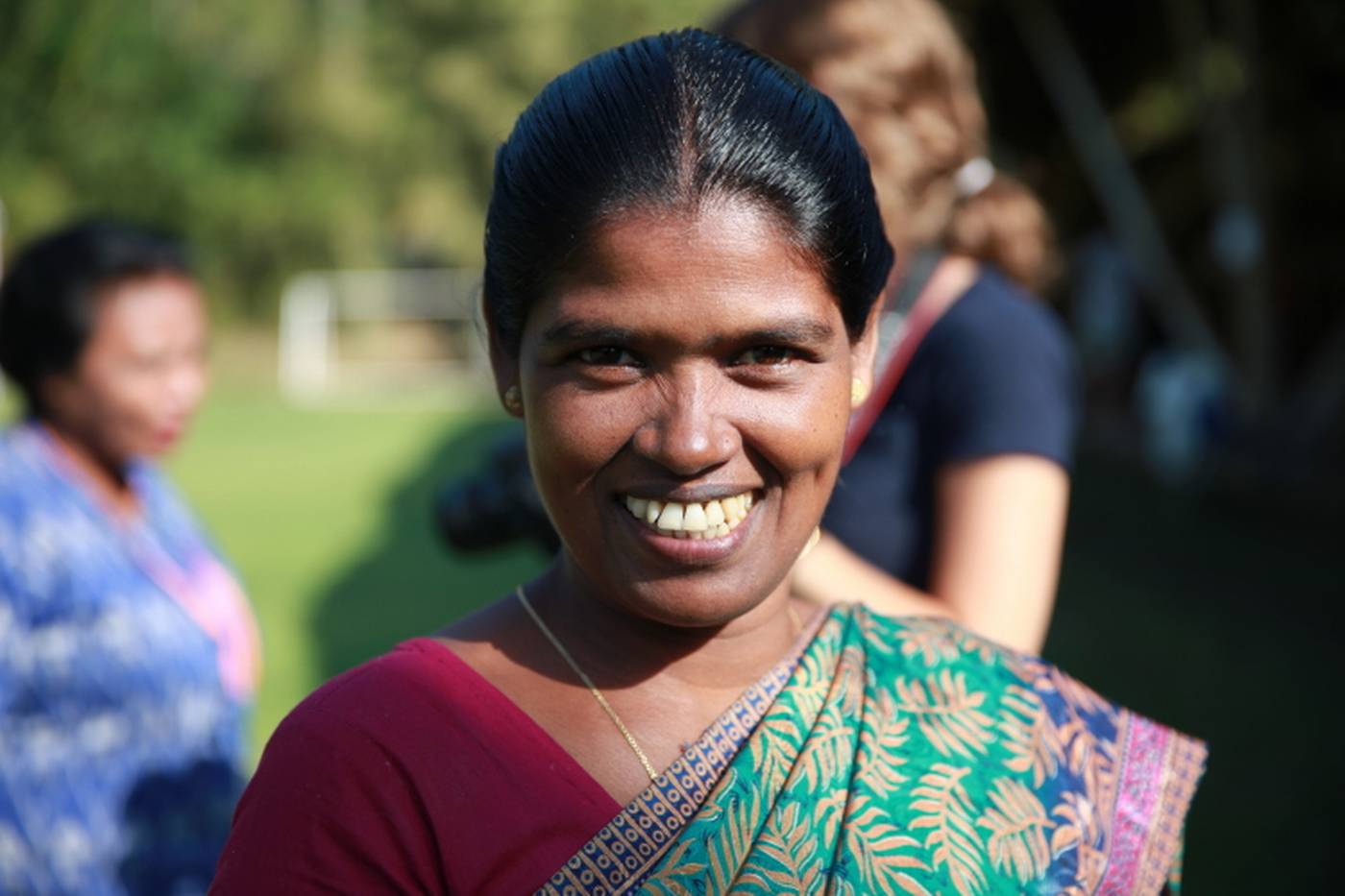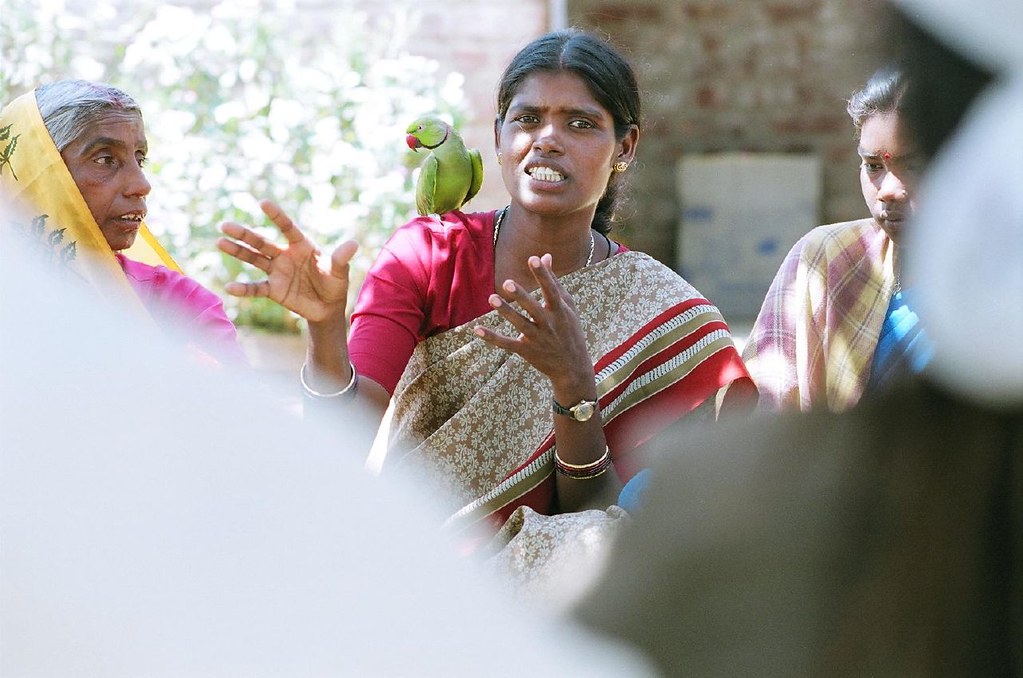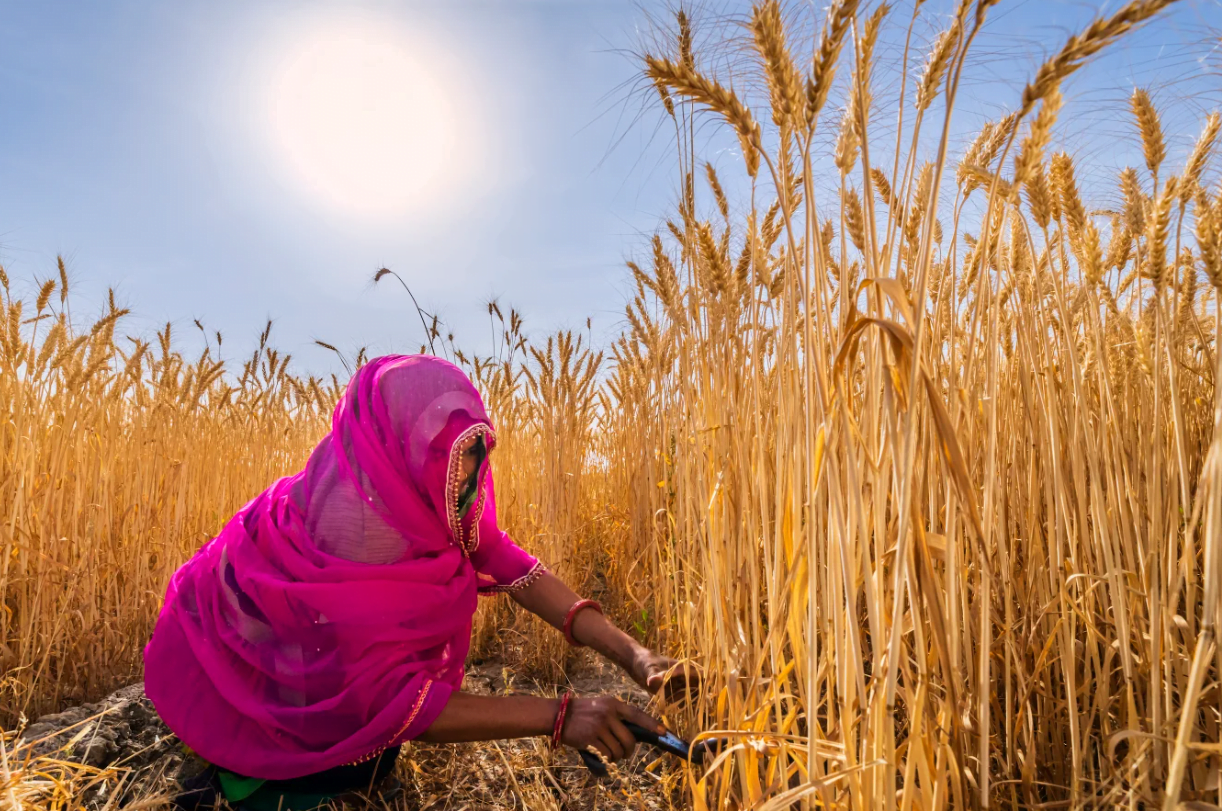Women have always been at the forefront of India’s major environmental movements. We grew up associating Narmada Bachao Andolon with Medha Patkar, Chipko with women of the village Mandal, or Amrita Devi with the army of martyred women who took her place. But in the majorly White and Savarna ecofeminist discourse in popular urban spaces, bright names from the margins get buried.
One of many such women is the child of the 1978 Singhbhum Jangal Katai Andolan. A parrot perched on her shoulder, a smile on her face, 40-year-old Suryamani Bhagat is one of the leading figures of the Jharkhand Jangal Bachao Andolan (JJBA) today. In February this year, she joined AJSU-P for its Jana-Sangrah Dhan-Sangrah programme.
From the forests of the Chhotanagpur plateau, she has become a significant voice for her indigenous rights on international platforms like the Summit on Women and Climate, Bali (2014). Suryamani’s story reflects the significance of indigenous voices and feminist narratives in preserving the environment.
Since her childhood, Suryamani Bhagat had seen her community play cat and mouse with authorities over land that they had nurtured and preserved. From Birsa Munda’s rebellion (1895 – 1900) for forest rights, to the Singhbhum Jangal Katai Andolan of 1978-83, over clear-felling of mixed forest in Kolhan to plant commercially profitable teaks, the history of the fight for forests nurtured Suryamani

The birth of the Jharkhand Jangal Bachao Andolan
“Abua raj ete jana, maharani raj tundu jana”, (Let the kingdom of the queen be ended and our kingdom be established). Birsa Munda’s slogan still resonates through the hills and forests of Jharkhand, Bihar, Bengal, Odissa and Madhya Pradesh. Suryamani Bhagat’s story cannot be told without the story of the fire that bred her.
The heavy-handed feudal administration of the British regime was met with one of the strongest rebellions in Indian history – the bloodied fight of 1895-1900, helmed by the Munda and Oraon communities, which led to the Chotanagpur Tenancy Act of 1908. It promised the recognition of forest land (Khunkatti) in 446 Munda villages. But under the garb of “scientific management”, 156 of them were majorly within the Forest Department’s overreach, destroying forests and looting Adivasi villages off their land.
In 1978, a major movement was mounted by the undivided Singhbhum district, against the Forest Development Corporation that was piggy-backing on colonial policies to cut down the mixed forest for teak plantations. The agitation soon snow-balled into the movement that led to the creation of Jharkhand. Reportedly, 400 houses were burnt, 4,000 cases were lodged against more than 13,000 tribal individuals. After sporadic protests across the land, it was in around 1984 that the authorities assumed the fire was tamed.
But a fire that keeps the embers alive can never really be tamed. In a report published in 1996, it was noted that “[a]n estimated 12,000 to 15,000 villages, primarily in eastern India [that] have mobilised to protect one to two million hectares of regenerating forest.” A few years after, with the collaboration of Bindrai Institute for Research Study and Action (BIRSA) and the International Work Group for Indigenous Affairs (IWGIA), Jharkhand Jangal Bachao Andolan – JJBA initiated its campaign in 2000.
JJBA proved to be a very organised and active grassroots campaign that successfully aided in the 2006 update in the legislation of the Scheduled Tribes and Other Traditional Forest Dwellers Act. The Act gave limited access to agricultural land, access and use of grazing land and water bodies and the right to own and access minor non-timber forest products. Any policy is useless to the citizens without education. JJBA’s primary role in the past many years has been to educate people about their rights under this Act, legalising their land under their name and their responsibility towards protecting the forest.
Suryamani Bhagat: Environmentalist, Activist, Educator
Suryamani Bhagat is from the Oraon community – a community that bears the legacy of Birsa Munda’s uprising. Born in abject poverty, her father was driven out of their land, weakening her prospects for education. A bright and keen student, Suryamani was awarded free education and lodging by her school.
Brought up by nature and ancient knowledge, Suryamani Bhagat was always interested in the history of the forest rights movement. The undying ebb and flow of resistance built in her the passion to protect their land, as the forest taught her about her place in nature. After finishing her bachelor’s in Sanskrit, she went on to pursue her dream of teaching. But the JJBA movement was gaining momentum around that time, and in 2000, she quit teaching to become a grassroots activist.
Suryamani Bhagat quit teaching to lead the movement, but continues to be an educator. Her work to empower women and reform the youth is rooted in climate change and forest conservation. The indigenous tribes rely on the forest for food, medicine, and spirituality. The conservation of the language and culture of the communities is crucial in this movement. Suryamani’s dreams are for the forest, its women, and its history
Suryamani Bhagat was a crucial figure in the consistent organising of resistance and negotiations with authorities that made JJBA instrumental in the passing of the Forest Rights Act 2006. But corruption and bureaucracy have made the execution of this Act extremely faulty. Today, Suryamani fights with forest authorities to wrestle back land into local hands, assists them to register land in their name, and mobilises villagers to protect forest resources.
She founded ‘Torang’ – a centre for tribal rights and culture in her village of Kotari. Suryamani Bhagat’s work, along with that of JJBA, has been crucial in seed-saving. They have been trying to repopulate the forest with ancient trees that serve the purpose of food, medicine and cultural practices. Acacia and Eucalyptus trees are often planted by authorities for afforestation drives, that provide a green facade quickly. But these trees are unhelpful to the ecosystem and the tribal communities that depend on the forest.
Also read: Tulasi Gowda: The Encyclopedia Of The Forest

Suryamani Bhagat’s feminism reads effortlessly but in reality, she weathered multiple resistances from her own community. She was an oddity in her village, who travelled to college with a male friend – whom she proposed to marry her. She earns money for the household and travels the world.
In an interview with Thomson-Reuters, she mentions that the most challenging hurdle in her journey has been men – both government authorities and peers from the community. But her journey and her movement majorly constitute women and youth of the village. In her words, the relationship of women with nature is deeply braided.
Today, she leads women’s groups in her village, awakening them to not just their community’s rights, but individual rights. The four-pronged programme of JJBA (Gram Sabha, Mahila Samiti, Banadhikar Samiti and Youth Group) relies heavily on the women and the youth of the community.

“This was environmentalism of the poor”, Ramachandra Guha opines that women and girls of India, from the margins of society, have always ended up on the frontlines of environmental movements in India. This “empty-belly environmentalism” is led by the most affected. Suryamani Bhagat insists that the relationship between women and nature is ancient.
In the words of Suman Munda, a peer to Suryamani, “Forest is our Mother. Our life sustains on her and our spirituality is tied to the trees”. Women, who generally foray into the forest, are sensitive to the forest. The trees are touched with a blade according to the moon cycle, or the season. These rituals have an understanding of new tissue growth in trees and when it is favourable to cut them.
Her story is not hers alone, but that of a collective voice of women in the forests of the Chhotanagpur plateau. In one of her interviews, Suryamani Bhagat emphasises that a singular voice will find no audience amongst the ‘babu’s who write laws in cold rooms‘. It is the women and the children of the land that collectively come together every time they present their demands. The discourses and jargons of ecofeminism might be getting written by hands that have never sifted soil, but it is in the collective voice of the indigenous women across the world that have brought the boldest changes in our rapidly melting world
There has been a concerted effort within the community to increase awareness amongst women and children about their role and rights in conserving the land and the forest. The fiery spirit of Suryamani has made her a role model for many women in the movement. Women have become more foot forward as the Mahila Samiti under JJBA, which operates as a cooperative. The traditional role of women within the Oraon community has been that of collecting non-timber materials from the forest and today, they have the knowledge and authority to face forest officials and administrators to raise their voices. The cooperative has led to functional discussions amongst women about health, medicinal plants, environmental issues and the economy.
Suryamani Bhagat quit teaching to lead the movement, but continues to be an educator. Her work to empower women and reform the youth is rooted in climate change and forest conservation. The indigenous tribes rely on the forest for food, medicine, and spirituality. The conservation of the language and culture of the communities is crucial in this movement. Suryamani’s dreams are for the forest, its women, and its history.

Jal, Jangal, Jameen: To whom does the forest belong?
To whom do the forests belong? – When we think of this question what comes to mind for most of us is perhaps the forest department, or the government, but never the original dwellers of the forests. Our country is presently in a conjured-up conflict of ownership. The sectarian politics of the ruling majority claims ownership of the forests through religious assertion, but even the loudest voices can stake no such claim, as the land was stolen from the aboriginals, the Adivasis of this land.
Their customs, practices and livelihood were built around sustaining the ecosystem. They understand this land the most as they are affected the most by the change in climate or legislature. The climate is changing and the first to notice are the people closest to the soil. Farmers have noticed that seeds do not produce as well and rain does not come when it should. The people of the forest communities have started seed-saving the ancient trees of these forests. Sal trees are replacing expensive Teaks, Mahua saplings are growing where Acacia sprung, and Neem or Sakhua stands instead of Eucalyptus trees.
Since her childhood, Suryamani Bhagat had seen her community play cat and mouse with authorities over land that they had nurtured and preserved. From Birsa Munda’s rebellion (1895 – 1900) for forest rights, to the Singhbhum Jangal Katai Andolan of 1978-83, over clear-felling of mixed forest in Kolhan to plant commercially profitable teaks, the history of the fight for forests nurtured Suryamani.
Her story is not hers alone, but that of a collective voice of women in the forests of the Chhotanagpur plateau. In one of her interviews, Suryamani Bhagat emphasises that a singular voice will find no audience amongst the ‘babu’s who write laws in cold rooms‘. It is the women and the children of the land that collectively come together every time they present their demands. The discourses and jargons of ecofeminism might be getting written by hands that have never sifted soil, but it is in the collective voice of the indigenous women across the world that have brought the boldest changes in our rapidly melting world.
Also read: Gaura Devi: The Environmental Activist Who Played A Prominent Role In The Chipko Movement
Featured Image Source: Flickr




